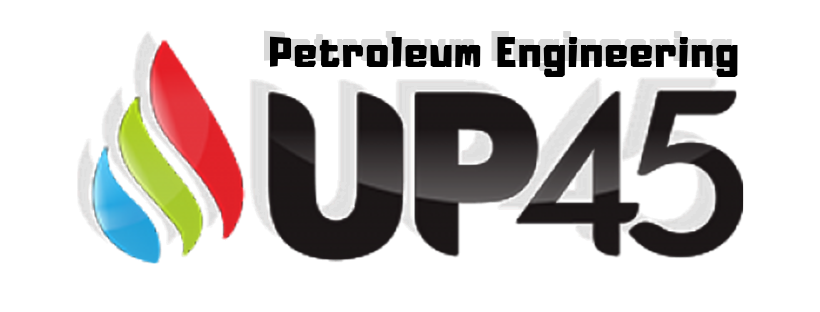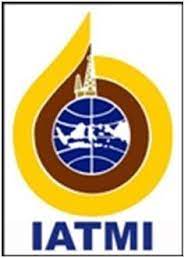Analisa Perbandingan Perencanaan Optimasi Continuous Gas Lift dengan Simulator Pipesim dan Manual Sumur “A1” dan “A2” di Lapangan
(1) Petroleum Engineering, Universitas Proklamasi 45 Yogyakarta
(2) Petroleum Engineering, Universitas Proklamasi 45 Yogyakarta
(*) Corresponding Author
Abstract
Sumur “A1” dan sumur “A2” adalah sumur yang beroperasi di lapangan “D” dengan metode produksi continuous gas lift. Pada Sumur “A1” telah terpasang instalasi gas lift dengan 7 katup. Sedangkan pada Sumur “A2” telah terpasang 6 katup. Sumber gas untuk injeksi berasal dari satu sumur gas pada lapangan yang sama, dimana sebagian besar produksi gas dijual ke konsumen, dan sebagian untuk injeksi. Sehingga jumlah gas dibatasi 0.7 MMCF/d untuk injeksi. Kurangnya kemampuan kompresor menyebabkan tekanan untuk injeksi gas dibatasi maksimal 750 psia.Pada Sumur “A1” dengan laju alir gas injeksi sebesar 0,4 MMSCF/d dan tekanan injeksi gas sebesar 550.7 psia pada kondisi sekarang hanya mampu mengaktifkan katup gas lift ke-3 sebagai katup operasi, dari 7 katup yang telah terpasang pada sumur. Laju alir total yang dihasilkan 245 STB/d (WC 84%). Sedangkan pada Sumur “A2” dengan laju alir gas injeksi sebesar 0,38 MMSCF/d dan tekanan injeksi gas sebesar 550 psia pada kondisi sekarang hanya mampu mengaktifkan katup gas lift ke-3 sebagai katup operasi, dari 6 katup yang telah terpasang pada sumur. Laju alir total yang dihasilkan adalah 61 STB/d (WC 74%). Laju alir gas injeksi dan besarnya tekanan injeksi permukaan pada desain existing continuous gas lift Sumur “A1” dan “A2” belum optimum. Oleh karena itu, perlu dilakukan redesign maupun optimasi. Tujuannya agar memperoleh laju alir gas injeksi dan tekanan injeksi permukaan optimum yang memberikan hasil laju alir total terbesar, disesuaikan dengan batasan kondisi lapangan. Redesign dilakukan menggunakan simulator pipesim dan manual. Kemudian, optimasi produksi dilakukan menggunakan pipesim berdasarkan Metode Jones & Brown untuk meningkatkan profil produksi kedua sumur. Pada Sumur “A1”, perbandingan redesign dengan pipesim “new spacing” dan manual, hasilnya cenderung sama. Sehingga digunakan “new spacing” yang dinilai lebih teliti dengan titik injeksi pada KSB V (1122.2 m), GLRtotal 2650 SCF/STB, WC 84%, laju produksi total 324 BFPD (52 BOPD). Optimasi menggunakan Current Spacing diperoleh katup operasi pada KSB IV (1062.23 m) dengan laju produksi total 335.3 BFPD (54 BOPD). Peningkatan fluida yang dihasilkan pada Sumur “A1”, yaitu dari 245 BFPD menjadi 324 BFPD dengan kenaikan perolehan minyak dari 39.2 BOPD menjadi 54 BOPD.Pada sumur A2, dilakukan redesign dengan pipesim “new spacing” dengan titik injeksi pada KSB VI (1356.5 m), GLRtotal 5700 SCF/STB, WC 74%, laju produksi total 126 BFPD (33 BOPD). Sedangkan optimasi menggunakan Current Spacing diperoleh katup operasi pada KSB V (1365.3 m) dengan laju produksi total 128 BFPD (33 BOPD). Peningkatan fluida yang dihasilkan pada Sumur “A2”, yaitu dari 61 BFPD menjadi 128 BFPD dengan kenaikan perolehan minyak dari 15 BOPD menjadi 33 BOPD. Pada sumur “A1” dan “A2” lebih efektif mengoptimasi produksi berdasarkan current spacing. Karena tidak memerlukan rig untuk mengubah kedalaman katup existing sehingga dapat menghemat biaya, energi, dan waktu. Cukup hanya dengan menambah tekanan injeksi di permukaan dan laju injeksi gasnya, dapat diperoleh produksi yang lebih baik.
"A1" wells and "A2" wells are wells operating in the "D" field with the continuous gas lift production method. In the "A1" Well, a gas lift installation with 7 valves has been installed. Whereas the "A2" well has 6 valves installed. The source of gas for injection comes from one gas well in the same field, where most of the gas production is sold to consumers, and partly for injection. So the amount of gas is limited to 0.7 MMCF/d for injection. The lack of compressor's ability causes the pressure for gas injection to be limited to a maximum of 750 psia. In the "A1" well with injection gas flow rate of 0.4 MMSCF/d and gas injection pressure of 550.7 psia in the present condition it is only able to activate the 3rd gas lift valve as operating valves, from 7 valves that have been installed in the well. The total flow rate produced is 245 STB / d (WC 84%). Whereas the "A2" Well with injection gas flow rate of 0.38 MMSCF / d and gas injection pressure of 550 psia in the present condition is only able to activate the 3rd gas lift valve as an operating valve, out of the 6 valves that have been installed in the well. The total flow rate produced is 61 STB / d (WC 74%). Injection gas flow rate and the amount of surface injection pressure in the existing continuous gas lift design "A1" and "A2" have not been optimum. Therefore, redesign and optimization need to be done. The goal is to obtain the optimum injection gas flow rate and surface injection pressure that provides the largest total flow rate, adjusted to the constraints of field conditions. Redesign is done using the pipesim simulator and manually. Then, production optimization is done using pipesim based on the Jones & Brown Method to increase the production profile of both wells. In the "A1" Well, the comparison of redesign with "new spacing" and manual pipesim, the results tend to be the same. So used "new spacing" which was assessed more thoroughly with the injection point at KSB V (1122.2 m), GLRtotal 2650 SCF / STB, WC 84%, total production rate of 324 BFPD (52 BOPD). Optimization using Current Spacing obtained operating valve at KSB IV (1062.23 m) with a total production rate of 335.3 BFPD (54 BOPD). Increased fluid produced in the "A1" Well, from 245 BFPD to 324 BFPD with an increase in oil acquisition from 39.2 BOPD to 54 BOPD. In A2 wells, redesigned with "new spacing" pipesim with injection point at KSB VI (1356.5 m) , GLRtotal 5700 SCF / STB, WC 74%, total production rate of 126 BFPD (33 BOPD). While the optimization using Current Spacing obtained operating valves at KSB V (1365.3 m) with a total production rate of 128 BFPD (33 BOPD). The increase in fluid produced in the "A2" well, from 61 BFPD to 128 BFPD with an increase in oil acquisition from 15 BOPD to 33 BOPD. In "A1" and "A2" wells more effectively optimize production based on current spacing. Because it does not require a rig to change the depth of the existing valve so that it can save costs, energy, and time. It is enough just to increase the injection pressure at the surface and the gas injection rate, better production can be obtained.
Keywords
Full Text:
PDFReferences
Abdassah, Doddy., “Teknik Gas Bumi”, Jurusan Teknik Perminyakan, Institut Teknologi Bandung, 1998.
Amyx, J.W., Bass, Jr D.M., Whitting, R.L., “Petroleum Reservoir Engineering Physical Properties”, First Edition, McGraw-Hill Book Company, Inc., New York, 1960.
Brown, K.E., Beggs, H.D., “The Technology of Artificial Lift Methods”, Volume 1, PennWell Publishing Company, Tulsa, Oklahoma, 1977.
Brown, K.E., “The Technology of Artificial Lift Methods”, Volume 2A, PennWell Publishing Company, Tulsa, Oklahoma, 1980.
Brown, K.E., “The Technology of Artificial Lift Methods”, Volume 4, PennWell Publishing Company, Tulsa, Oklahoma, 1984.
Dewi, Aristanti O., “Seminar Evaluasi dan Optimasi Produksi Menggunakan Metode Continuous Gas Lift”, Universitas Proklamasi 45, Yogyakarta, 2016.
Hariyadi, dkk., “Pengantar Teknik Perminyakan (TM-110)”, Universitas Pembangunan Nasional “Veteran”, Yogyakarta, 2004.
Latuan, Yosef B. B., “Perencanaan Optimasi Produksi Continuous Gas Lift Pada Sumur “X” Lapangan “Y” PT. Pertamina EP Asset 2 Menggunakan Simulator Pipesim”, UPN “V”, Yogyakarta, 2016.
Mandala, Wirawan W., “Mekanika Reservoir”, Gallery Ilmu, Yogyakarta, 2014.
Mandala, Wirawan W., “Metode Pengangkatan Buatan (Gas Lift)”, -, Yogyakarta, -.
Nind, T.E.W., “Principle of Oil Well Production”, McGraw-Hill Book, Company, Inc., New York, 1964.
Pettijhon. S.J., “Sedimentary Rock”, Oxford and IBH Publishing Co., New York, 1957.
PT. Pertamina EP, “Profil PT. Pertamina EP”, 2017.
PT. Pertamina EP Asset 3, “Data Sumur CMB-14, CMB-26, CMB-13, CMB-15 Jatibarang Field”, Cirebon, 2017.
PT. Pertamina EP Asset 3, “Profil dan Tinjauan Lapangan PT. Pertamina EP Asset 3 Jatibarang Field”, Cirebon, 2017.
Purwaka, Edi., “Gas Lift”, Universitas Proklamasi 45, Yogyakarta, 2011.
Rukmana, D., Kristanto, D., “Teknik Reservoir : Teori dan Aplikasi”, Pohon Cahaya, Yogyakarta, 2012.
Schlumberger, “Gas Lift Design and Performance”, Simulator Pipesim, 2008.
, “Gas Lift Book 6 of The Vocational Training Series”, Third Edition, API, Dallas, 1994.
DOI: https://doi.org/10.30588/jo.v1i2.290
Article Metrics
Abstract view : 1142 timesPDF - 2 times
Refbacks
- There are currently no refbacks.
Copyright (c) 2017 Aristanti Oktavia Dewi, Wirawan Widya Mandala



.jpg)










.png)